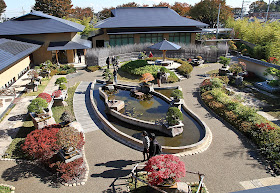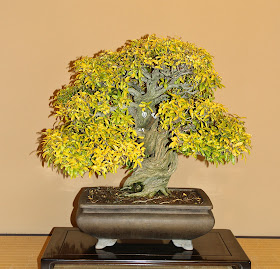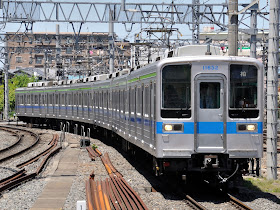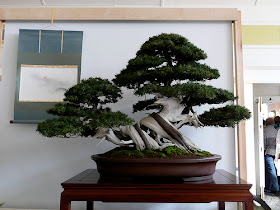If you really wish to start a Bonsai from seed, then you must be aware that it can take ages to see first results. Not mentioning about time and effort that must be invested in wiring and shaping the Bonsai. There is no such thing as Bonsai seeds, these are normal trees and you the one in charge to make it happened! You should of course be aware that trees used in Bonsai are not 'special', not genetically different, they are the same trees as you see all around you.
For those that still may wish to grow a tree from seed. This will give you absolute control over the tree from its beginning. The best advice I can give you is don't do it, simply because life is to short.
You may have been the lucky recipient of one of the many Bonsai Kits available, go on and try it! follow the instructions, watch those precious little seeds germinate, poke their heads above the soil, and die. On closer inspection you will probably find the seedling has rotted at about soil level, this is called 'Damping off' and is a fungal attack. You can overcome this by adding a fungicide to the first watering and then as directed by the instructions. Bonsai 'kits' put people off the hobby, convincing them that bonsai are difficult to keep, as such they should be avoided. All of us have access to tree seeds, in parks or woods, our own gardens or perhaps through specialist suppliers. These will be 'fresher' than other sources.

When you have your seeds divide them into two lots. If you live in a temperate part of the world the chances are that your seeds will need to be chilled to start them growing, this is called 'Stratification'. Put half of the seeds in a container (a plastic bag) and place them in the refrigerator (not the freezer) for a few weeks. Plant the remainder straight away. If you come from the Tropics plant the seeds soon after collection.
They should be planted in a sturdy pot, or tray, and left to their own devices. This may take a year or so but provided they are not disturbed by birds, mice, or you, they should if fertile germinate. Last but not least, you have to put special importance on the surrounding environment before you start.
How to Store Seeds
Keep seeds out of direct sunlight in a cool spot that maintains a fairly consistent temperature. Consider a cold closet, a basement, or a room on the north side of your home that remains cool year-round. Freezing isn’t necessary for short-term storage, but you can refrigerate seeds, provided they are sufficiently dry.
All seeds need to germinate is sufficient water and temperatures that are favorable for plant growth. Make sure your seeds don’t sprout by storing them in a spot that isn’t humid and ensure the seeds are dry before sealing them in a container. Moisture is an especially important factor if you are freezing or refrigerating your seeds. If seeds are too wet, they can rot in the refrigerator or suffer frost damage in the freezer. If you store seeds in the refrigerator or freezer, place the packets in an air-tight container and ensure the seeds are properly dried to begin with. If you are storing seed you’ve saved yourself (bravo!), follow the correct seed-saving processes to ensure they are dry.
Consistency is key when it comes to temperature and humidity levels. This is why you should avoid storing seeds in a spot that isn't climate-controlled, like a garage or shed, where temperatures and moisture levels can fluctuate wildly.
We’ve all had a plant or two that’s caught the attention of a pest. Critters, rodents, and bugs also enjoy nibbling on seeds that are waiting to be planted. Choose a storage spot that is pest-free and you can keep a close eye on to ensure it remains that way. Glass jars, metal containers, or wire mesh can further protect seeds from invaders.
However, there is something to be said for a little breathing room. When using a storage area that is cool and dry year-round, you may be able to keep seeds in paper bags, mesh bags, or envelopes in what is called “open storage”. Moisture and heat generated by the seed during respiration can escape through these gas-permeable containers. This is also a smart tactic when you aren’t sure about the moisture content of the seed. But you will still want to take precautions to protect your seeds from pests.
Some seeds do not fare as well in storage. Crops like carrots, parsnip, onions, and leeks are notoriously short-lived. For these, freezer storage is best as seeds from these varieties that are stored at or near room temperature will quickly lose their ability to germinate and grow.
With these safeguards in place, you’ll be able to plant your seeds later and enjoy watching them grow.
Interesting Books on Bonsai can be found here:
The Complete Book of Bonsai --> I've been into bonsai for 25 years and this is the basic Bible for beginner and intermediate bonsai enthusiasts. It has an excellent section on techniques, including pruning, wiring and whatnot, and it has a large species-specific tree guide. If you're into bonsai and want only one book, this is it.
Indoor Bonsai The Great Selection --> Creating beautiful, healthy bonsai is a wonderful skill that anyone can learn, with a little time, patience, and this all-inclusive manual. With color photos and drawings to illustrate the points, it introduces all the cultivation techniques; offers expert advice on location, soil types, watering, and pest control; and provides intricate instruction on training the bonsai--including pruning, wiring and stretching it.
The Secret Techniques of Bonsai --> In The Secret Techniques of Bonsai, the author of the groundbreaking Bonsai With American Trees teams up with his son to offer not only the basics for creating perfect bonsai, but also secret techniques they’ve developed over years of careful work and observation.
Bonsai Survival Manual --> Problem solving when your Bonsai get sick. Expand your gardening repertoire as you create a captivating and exquisite miniature world. In this introductory guide, Colin Lewis covers everything you need to know to design, grow, and successfully maintain attractive bonsai.
Bonsai and the art of Penjing --> Bonsai & Penjing, Ambassadors of Beauty and Peace describes how Chinese penjing and North American bonsai were later added to the Museum, making its collection the most comprehensive in the world. Stories of individual trees and forest plantings are featured, as are the roles played by the skilled and talented creators of these living art forms people such as John Naka, Saburo Kato, Yuji Yoshimura, Harry Hirao, and Dr. Yee-Sun Wu.
Bonsai with Japanese Maples --> With their delicate foliage, seasonal color changes, and intricate pattern of branching, Japanese maples are among the most popular and suitable plants for bonsai design. In this long-awaited book, internationally renowned expert Peter Adams discusses both the specific horticultural needs of Japanese maples as bonsai subjects and illustrates proven techniques for creating and maintaining beautiful specimens.
The Modern Bonsai Practice --> The most current, useful information on growing Bonsai. Fresh, practical, definitive, comprehensive reference guide to the finest art of horticulture: growing miniature trees. Common sense bonsai answers separating myth from fact with depth and detail. Appropriate for both bonsai hobbyists and experienced practitioners.
More Bonsai articles can be found here:
Please click here for more information on -->
Chinese Penjing Bonsai
Please click here for more information on -->
The Origins of Bonsai
Please click here for more information on -->
The Art of Saikei Bonsai
Please click here for more information on -->
Japanese Tanuki Bonsai
Please click here for more information on -->
How to Water a Bonsai
Please click here for more information on -->
Bonsai Healing Methods
 stores is not easy. The usual thing when buying online are the shipping costs. Some popular Bonsai retailers do not ship internationally and those that do are inevitably more expensive. Nevertheless, it's worth checking and perhaps get in contact with them directly and see if the retailers are willing to compromise. At the end of the day, we are all out there looking for the best and affordable Bonsai. You may find a dramatic difference in prices between Seeds, pre-Bonsai and Bonsai. Having said that, it would be easier and more convenient to start your passion with a pre-Bonsai. Please refer to my blog post on different tree species that will help you to detect the right Bonsai that matches your environment. Some tree types suit better to tropical environment whereas others like the Juniper for example, thrive in a non tropical environment. Therefore, its always good to check these matters in details before purchasing.
stores is not easy. The usual thing when buying online are the shipping costs. Some popular Bonsai retailers do not ship internationally and those that do are inevitably more expensive. Nevertheless, it's worth checking and perhaps get in contact with them directly and see if the retailers are willing to compromise. At the end of the day, we are all out there looking for the best and affordable Bonsai. You may find a dramatic difference in prices between Seeds, pre-Bonsai and Bonsai. Having said that, it would be easier and more convenient to start your passion with a pre-Bonsai. Please refer to my blog post on different tree species that will help you to detect the right Bonsai that matches your environment. Some tree types suit better to tropical environment whereas others like the Juniper for example, thrive in a non tropical environment. Therefore, its always good to check these matters in details before purchasing. Japanese Av Star
Japanese Av Star




















